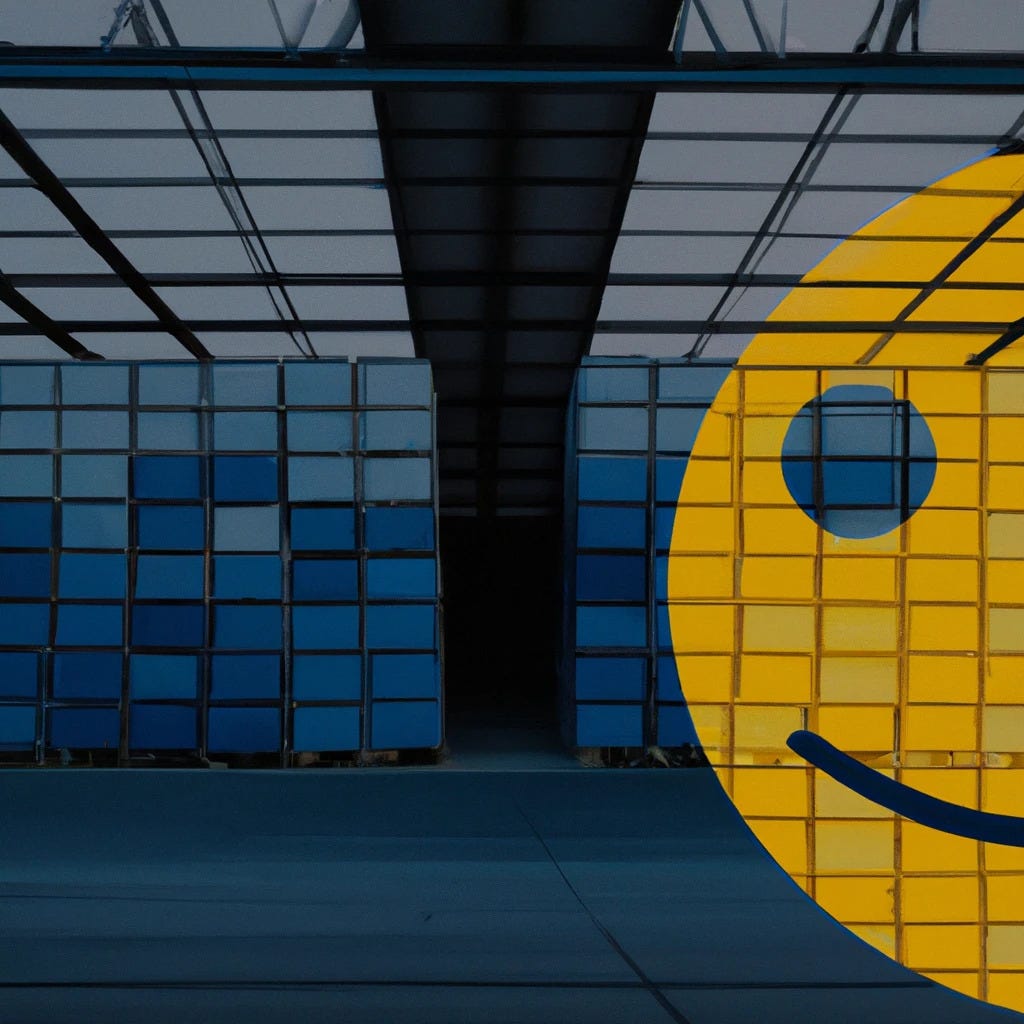Warehousing Loyalty
Customer loyalty can come from the least-expected place: your warehouse
Product excellence. Customer service. Points and rewards.
These are top of mind when thinking of customer loyalty. Put “warehouse operations” at the end of this list and it feels out of place. But if your business ships products, a warehouse probably sits between your products and their ability to drive customer loyalty.
What good is a great product if it arrives damaged? What good is customer service if most inquiries are about tracking numbers? And what good are reward programs if customers don’t return to redeem points after a poor delivery experience?
Warehousing impacts everything, and can even be a differentiating feature. Just look at Amazon, a company that achieves loyalty by means of logistics and warehousing excellence. It ranked #1 for customer loyalty from 2016 to 2021 and was outranked by Apple in 2022. Why? Because Apple started supporting product excellence with warehousing excellence.
Apple succeeded in achieving warehousing excellence by utilizing its retail stores as distribution centers to provide same-day shipping. However, there are several methods to achieve warehousing excellence. Here are a few that are facilitated by technology…
Use cross-docking (Omni Logistics), wave picking (Carton Cloud), and automated sorting (Plus One Robotics) to expedite fulfillment and shipping. This technology is good for businesses with large warehouses that store many different types of products. You can measure the impact it has on customer loyalty with error rates (wrong orders) and percentage of orders damaged since this technology reduces human error and the amount of package handling in a warehouse.
Use dropshipping marketplaces like fabric Marketplace and Canal to partner with brands that have solid warehousing operations and can ship products on your behalf. These marketplaces are good for ecommerce businesses that want to increase assortment without adding new inventory. You can measure the impact they have on loyalty with customer lifetime value (CLV) and time between orders since customers are more likely to return to you if you carry more products.
Use OCR technology to turn any smartphone in a warehouse into universal scanners that solve data ingestion problems (think returns, inbound inventory, even letter mail). They can even track package activity, status, and condition throughout the last mile. This technology is good for businesses with multiple hops in the supply chain where packages experience numerous handoffs. You can measure the impact this has on loyalty with customer service inquiries about damaged goods and delivery estimates.
This last point reminds me of a company I recently spoke with that ships large, high-value products from warehouses in Asia to customers in the United States. On average, it takes 8 to 12 weeks for their products to reach customers and packages travel across 7 hops. Customers are fine with waiting but not when products arrive with damages since that means an additional 8 to 12 weeks of waiting time.
To catch damages earlier on, they plan to inspect packages at each hop they control with OCR technology. Employees will scan package labels with smartphones to greenlight or redlight packages. If redlit, the package can be opened, inspected for damages, and either repackaged or sent back to the warehouse.
Since smartphones are connected to inventory and tracking systems, customers receive an update about what’s happening and when the new package is expected. This is a proactive, automated form of customer service communication that can save loyalty in spite of mistakes made in the supply chain.
“The warehouse, while mostly lying beyond the scenes of the corporate facade, is really at the heart of the customer experience.” - Rob O’Byrne, Logistics Bureau
Whatever warehousing optimization you choose to make, remember that warehouse excellence includes consistently selecting the appropriate products in the correct amounts, preventing defective items or packaging from reaching the outbound loading dock, and promptly assembling and dispatching orders to meet the shipping company's delivery commitments.
For example, Apple’s “mini warehouse” effort is successful because store employees promptly dispatch orders to FedEx, UPS, and other carriers. Technology within the smartphones every Apple employee carries makes this possible.
But warehouse optimizations are just the first step. It’s equally important to measure the impact they have on customer loyalty. In addition to tracking the metrics mentioned above, you can use the net promoter score (NPS); request anecdotal feedback through surveys, sales calls, and customer reviews; and measure your customer retention rate before and after implementing changes in warehousing.
Which changes will you implement in your warehouses? How will you measure their impact on customer loyalty?


